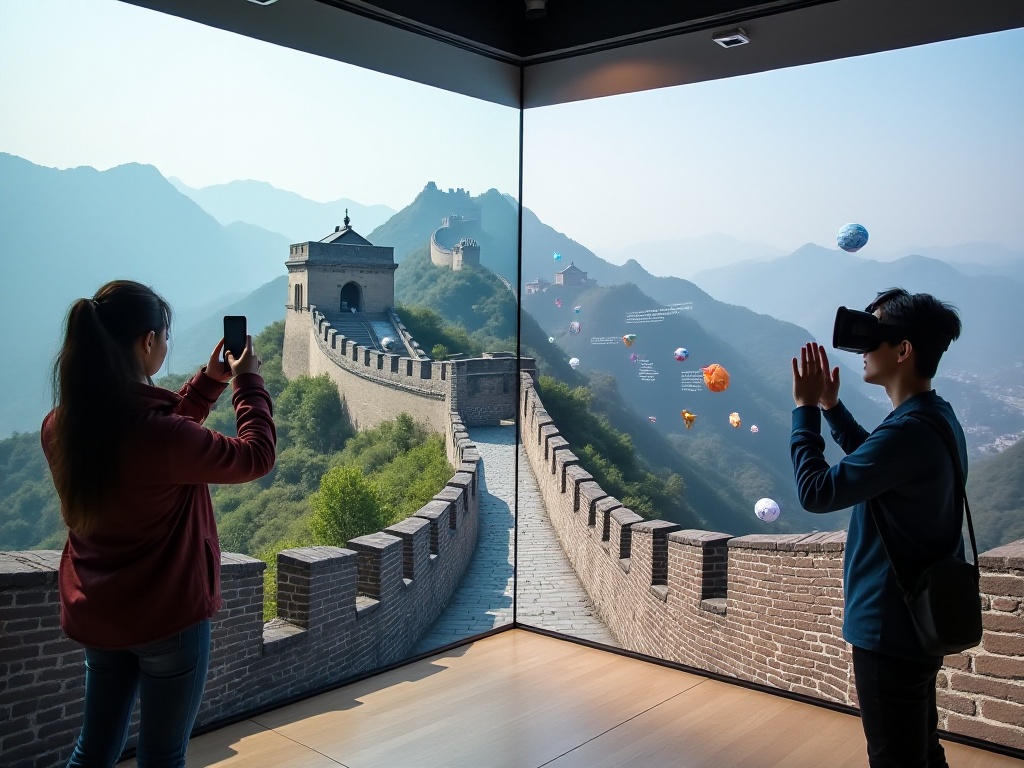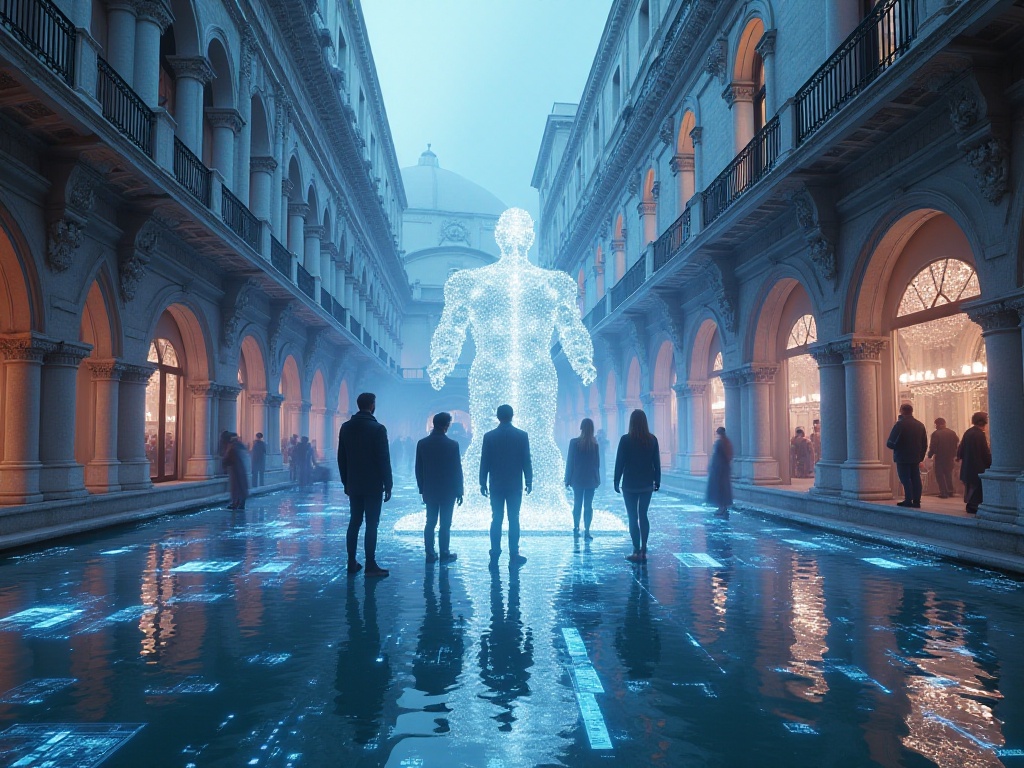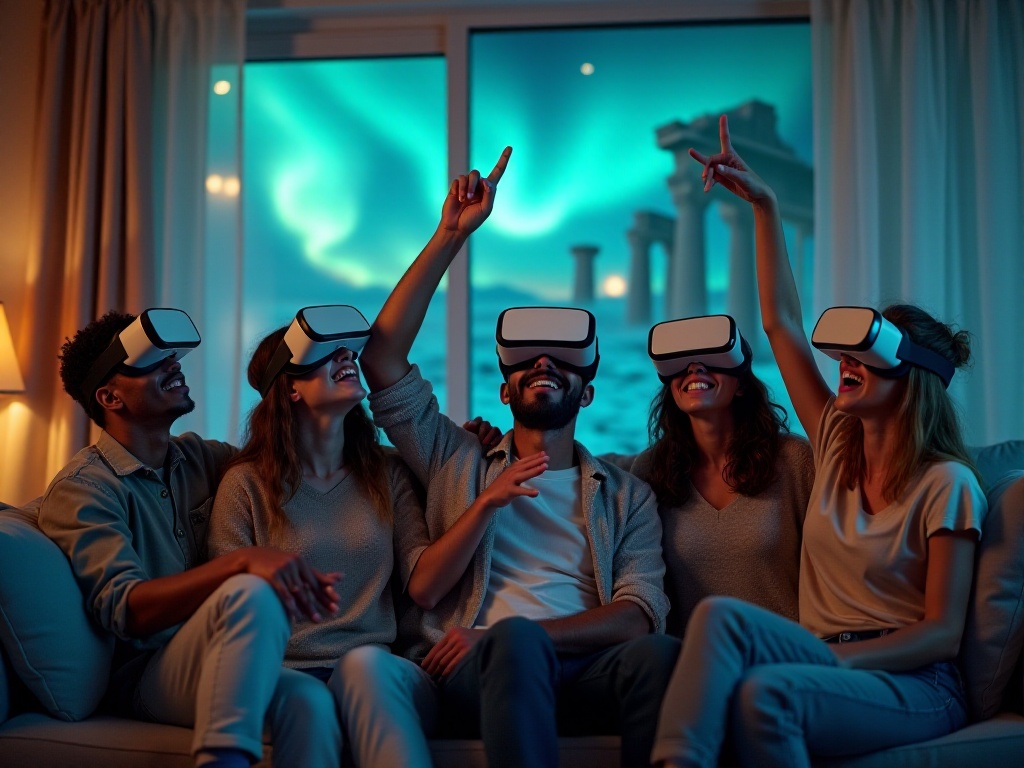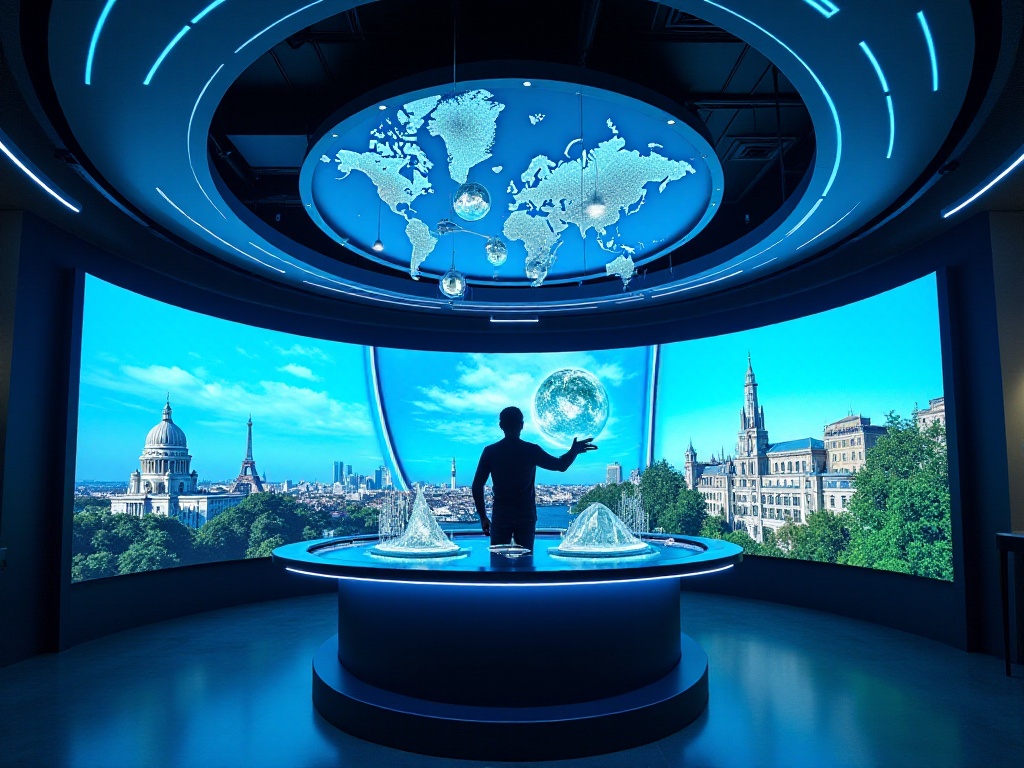Recently, I noticed an interesting phenomenon - more and more friends around me are trying virtual tourism. My good friend Xiao Wang set up a high-end VR system at home, which reportedly cost him half a month's salary. When I visited his home the other day, I saw him wearing VR goggles, gesturing enthusiastically while "touring" the Louvre in his living room. Seeing his excitement, it was as if he was truly present in that Parisian art sanctuary. Xiao Wang told me that through the VR device, he could not only appreciate the Mona Lisa's mysterious smile in 360 degrees up close, but also learn about art history through virtual guides.
Technology's development is truly amazing, allowing us to experience sights from around the world without leaving home. But can this completely replace traditional in-person travel? As a travel blogger who has visited over 40 countries globally, this question has been lingering in my mind. Today, I'd like to share my thoughts with everyone.
When many people think of virtual tourism, their first thought might be someone wearing bulky VR goggles, looking around a room. But in reality, virtual tourism takes many more forms than we imagine. It's an innovative way of traveling that uses modern technology to let us experience destinations digitally.
Today's virtual tourism can be high-definition 360-degree panoramic videos that make you feel like you're there; interactive virtual tours letting you freely choose where to go and what to learn about; or immersive VR experiences providing unprecedented levels of immersion. Some virtual tourism platforms have even developed haptic feedback systems that let you feel tactile sensations when touching objects in the virtual world.
I remember trying the latest virtual tourism equipment at a tech expo last year - not only did it have 8K resolution, but it also came with surround sound and temperature simulation. When I "stood" in the Sahara Desert, I could not only see the rolling dunes and hear the wind, but even feel the heat waves hitting my face. This multi-sensory experience made virtual tourism feel more real.

I've been deeply researching virtual tourism these past two years, trying almost all mainstream virtual tourism platforms and products on the market. For example, last week I joined a virtual Antarctic tour through Beeyonder. This wasn't just watching videos - it was a live stream by a professional guide conducting research in Antarctica. He showed us penguin behaviors, explained Antarctic ecology, and most excitingly, we could interact and ask questions in real-time.
When a group of penguins waddled past the camera, I asked the guide what species they were. He immediately gave a detailed answer and adjusted the camera angle to show us their characteristics. When a young participant asked why penguins can't fly, the guide spontaneously gave us a biology evolution lesson, explaining it in an accessible way that left a deep impression.
The day before yesterday, I took a Japanese matcha-making class through Amazon Explore. The instructor was a tea ceremony teacher from Kyoto with over twenty years of experience. He not only explained the history and culture of matcha in detail but also taught us step-by-step how to properly use the tea whisk. Though it was an online course, the teacher gave timely guidance and corrections based on each student's technique. This interactive learning experience showed me another possibility of virtual tourism.
I recently discovered a cool virtual tourism feature - real-time language translation. Imagine taking a virtual Italian cooking class without worrying about language barriers, as the system automatically translates Italian to Chinese, letting you fully immerse yourself in learning Italian cuisine. These experiences make me marvel at how amazing technology is.

Speaking of virtual tourism's advantages, I think its greatest highlight is accessibility. It makes travel more democratic and accessible to the masses. Last year, I received a private message from a wheelchair-using fan who said they "visited" Machu Picchu through VR, fulfilling their long-held travel dream. Reading that message really moved me. Isn't technological progress meant to make everyone's lives better?
From an economic perspective, virtual tourism has clear advantages. A high-quality virtual travel experience might only cost a few hundred yuan, while an actual international trip often costs tens of thousands. Given current inflation and widespread living pressures, virtual tourism undoubtedly provides a more economical option.
Additionally, virtual tourism has the unique ability to transcend space and time. For instance, you can "travel back" to ancient Rome, walk through the Roman Forum, and feel its magnificent atmosphere; you can "visit" Earth's northernmost and southernmost points in the same day; you can even safely appreciate nature's grandeur moments before a storm hits. These experiences, difficult to achieve in real travel, become possible in the virtual world.
Another major advantage of virtual tourism is its convenience. No need for long vacations, visa concerns, jet lag worries, or language barriers - you can go wherever you want, whenever you want. Especially for busy office workers, virtual tourism provides an excellent way to decompress. After work, just put on VR equipment and you can "travel the world" in minutes.

After discussing so many advantages of virtual tourism, as someone who frequently moves between virtual and real worlds, I must admit virtual tourism still cannot completely replace traditional travel. Why? Let me give an example:
I remember my first visit to Kyoto's Arashiyama Bamboo Grove in 2019, getting up at 5 AM. The sky was just beginning to brighten, with few tourists around. Walking through the deep bamboo forest, listening to morning wind rustling through bamboo leaves, breathing fresh air, feeling the stone pavement beneath my feet. Sunlight filtered through the bamboo, creating dappled shadows on the ground. In that moment, all senses were engaged - that feeling of physical and mental pleasure cannot be fully replicated by any virtual experience.
Or last year when I camped in Morocco's Sahara Desert, waking up at midnight and stepping out of my tent to see countless stars overhead, feeling like I could touch the Milky Way. That sense of awe, that feeling of being one with nature - no matter how advanced virtual technology becomes, it's hard to truly recreate.
Travel has never been just about seeing - more importantly, it's about experiencing with your whole being. Those chance encounters on the road, warm exchanges with strangers, delightful surprises when tasting local food - these are all important parts of travel memories. Virtual tourism might give us visual and auditory pleasure, but those subtle, authentic, human experiences are hard to recreate in the virtual world.
Moreover, virtual tourism faces some technical issues. For instance, current VR equipment generally causes dizziness - many people feel uncomfortable wearing VR goggles for more than half an hour. Issues like image lag, bulky equipment, and operational inconvenience also affect user experience to some extent.
Furthermore, creating virtual tourism content faces huge challenges. Producing high-quality virtual tourism content requires significant human and material resources. Not only do you need professional filming teams, but also powerful post-production capabilities, meaning many niche but distinctive tourist destinations might lack quality virtual tourism content.

Let's analyze the current state and prospects of virtual tourism with some specific data. According to global virtual tourism market research reports, the global virtual tourism market reached $70 billion in 2023 and is expected to exceed $200 billion by 2028. This growth rate is truly remarkable.
Data shows that among 18-35 year olds, over 60% express interest in virtual tourism, with 25% having tried some form of virtual tourism. These numbers show virtual tourism is being increasingly accepted and tried by young people.
Looking at content types, cultural sites and natural scenery are the most popular virtual tourism content, accounting for 40% and 35% of market share respectively. Virtual tours of world-famous museums are most popular, with about 45% of virtual tourism users having experienced online museum visits.
However, the traditional tourism market also shows strong development momentum. Global tourism revenue in 2023 recovered to 85% of pre-pandemic levels, expected to fully recover and exceed pre-pandemic levels in 2024. Particularly among young people, surveys show over 80% say they would still choose physical travel no matter how advanced virtual tourism technology becomes.
What do these numbers tell us? They indicate virtual and traditional tourism have a complementary rather than substitutive relationship. Virtual tourism is opening up a completely new market rather than simply eating into traditional tourism's market share.

So how should ordinary travel enthusiasts view these two forms of tourism? My suggestion is: treat virtual tourism as a complement to traditional travel, not a replacement.
For example, if you're planning a trip to Italy, you can first use virtual tourism to learn about attraction locations, optimal visiting routes, cultural and historical background, etc. This helps you familiarize yourself with destinations and better plan your itinerary. Before my Rome trip last year, I first "toured" the Vatican Museums through virtual guides, which helped me more purposefully appreciate key artworks during my actual visit.
Or when you temporarily can't travel due to time, budget or other constraints, virtual tourism can satisfy your wanderlust. Last year a friend really wanted to see the Northern Lights in Iceland but couldn't take time off work. I recommended trying a virtual aurora experience - while not as stunning as being there, it was a decent alternative.
For people with mobility limitations, virtual tourism opens a new window. Through virtual technology, they can transcend physical limitations to explore this rich and colorful world.

Looking ahead, I believe virtual tourism will see even greater development. With the popularization of metaverse concepts and advancement of AR/VR technology, virtual tourism experiences will become increasingly realistic. We can foresee scenes like this in the near future:
Holographic projection technology application letting virtual guides appear "physically" before us; breakthrough haptic simulation technology letting us "touch" objects in the virtual world; development of olfactory simulation systems letting us smell coffee aromas wafting from Venetian cafes; more powerful AI technology enabling virtual guides to provide personalized commentary based on each person's interests and needs.
But no matter how technology develops, those authentic travel experiences, the warmth of face-to-face communication with locals, unexpected discoveries while getting lost in strange cities - these are unique charms of traditional travel that virtual technology can never fully replace.
As one travel writer said: "The meaning of travel isn't about where you arrive, but who you become along the journey." Whether virtual tourism or traditional travel, what matters is whether they can make our lives richer and help us better understand this world and ourselves.
What do you think? Welcome to share your views and experiences with virtual tourism in the comments. If you haven't tried virtual tourism yet, why not start with some free online museum tours and gradually experience the charm of this new way of traveling. You might fall in love with this new way of experiencing world scenery without leaving home.
Remember, whether virtual or real, the essence of travel is exploration and growth. Let's maintain open and curious minds, embrace new possibilities brought by technology, while not forgetting the beauty of the real world. After all, life's most beautiful scenery is often found along the journey.
 Previous
Previous
